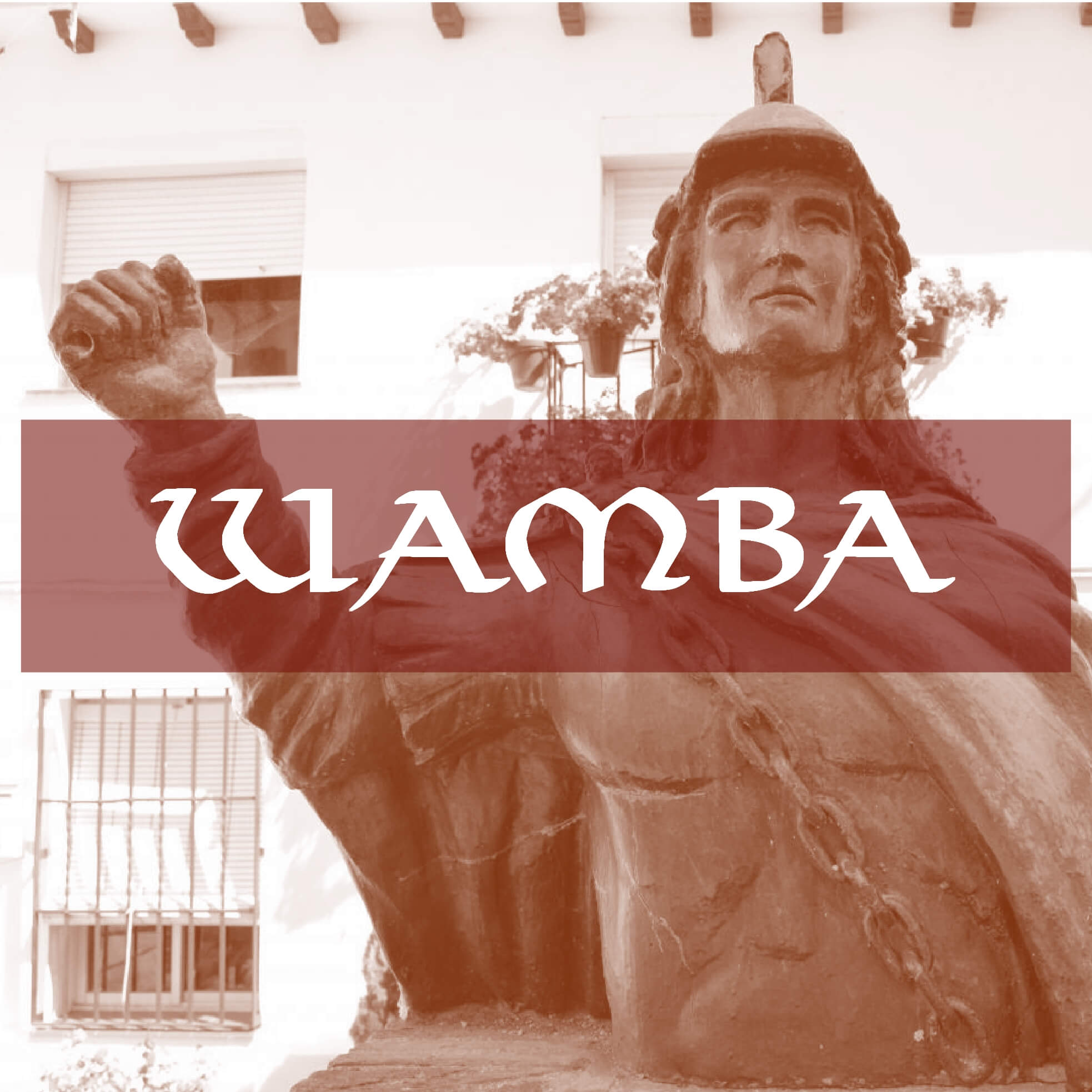Flavius Wamba Rex, was king of the Visigoths between 672 and 680. He came to power electively, after the reign of Recesvinto. He carried out numerous reforms, most of them aimed at reducing the power of the nobility, which acted as a destabilizing element of the Visigoth monarchy. Finally, he was removed from the throne by a nobiliary conjure in 680, succeeding Ervigio.
Wamba’s life
Who was Wamba?
Wamba (630-681 d.. C.). According to the legend, was born in the town of Pujerra, in the present province of Malaga. He was king of the Visigoths between the years 672 and 680 d. C, as successor of King Recesvinto (653-672).
What do we know about Wamba’s life before he was appointed king?
We have virtually no information about Wamba’s family origins, and there is no data that familiarly links him to his predecessor, Recesvinto.
It is known that by the year 655 he was already part of the most prominent positions of the territorial administration and was probably, at that time, Duke of some of the provinces of the kingdom, otherwise he would not have been able to opt for his choice as king.
We must know that the succession of kings of the Visigoth kingdom was not from parents to children, it was not an inherited monarchy, since it was an elective process among the various nobles of the kingdom.
How was he appointed king of the Visigoths?
When Recesvinto died, Wamba was in Gérticos (a town in the present province of Valladolid named after Wamba, as the place of election of that king), along with other prominent figures of the kingdom, and it was there that he was named successor.
According to some chronicles, Wamba himself would have rejected the offer to be king, only being accepted under the threat of death of one of the dukes who were gathered there. The truth is, he eventually ended up accepting the position of king and was already enthroned in Toledo (Capital of the Visigothic Kingdom) on September 19, 672.
What do we know about his years of reign?
As soon as his reign began, he had to face a rebellion of the Vascons in the north and a rebellion of nobles from the Tarraconense and Narbonense, north-east of the Visigoth kingdom. Wamba, in a vigorous performance, first defeated the Vascons and later seized Barcelona and Gerona, to end crossing the Pyrenees and end the rebellion with the seizure of the city of Nimes.
One of the main measures was of a military nature, by forcing all free men of the kingdom to come with all their forces, in case of royal call. Disobedience would be punished by the banishment, slavery or confiscation of all its property.
Other outstanding measures taken by Wamba were: The attempt to strengthen the real power vis-à-vis the nobles, with the appointment of palatine positions to libertals; the beautification of the city of Toledo as capital of the kingdom; the increase of the boato and pomp in the court, to stand out above the nobles; and the attempt to control the episcopal power by trying to prevent the increase of patrimonial power of the nobles.
What was the end of his reign and his life like?
All previous reforms caused discomfort among the high spheres of the Visigoth kingdom, so the reign of Wamba ended in a palatine conjure, in which it was deceived and drugged or directly poisoned. Some testimonies recall that he asked for canon penance, which disabled him to reign, and ended up appointing Ervigio as successor in October 680.
Wamba would recover, and much to his regret, he retired permanently to a monastery in Pampliega (in present-day Burgos province), where he would eventually die in late 681.
Juan Manuel López
